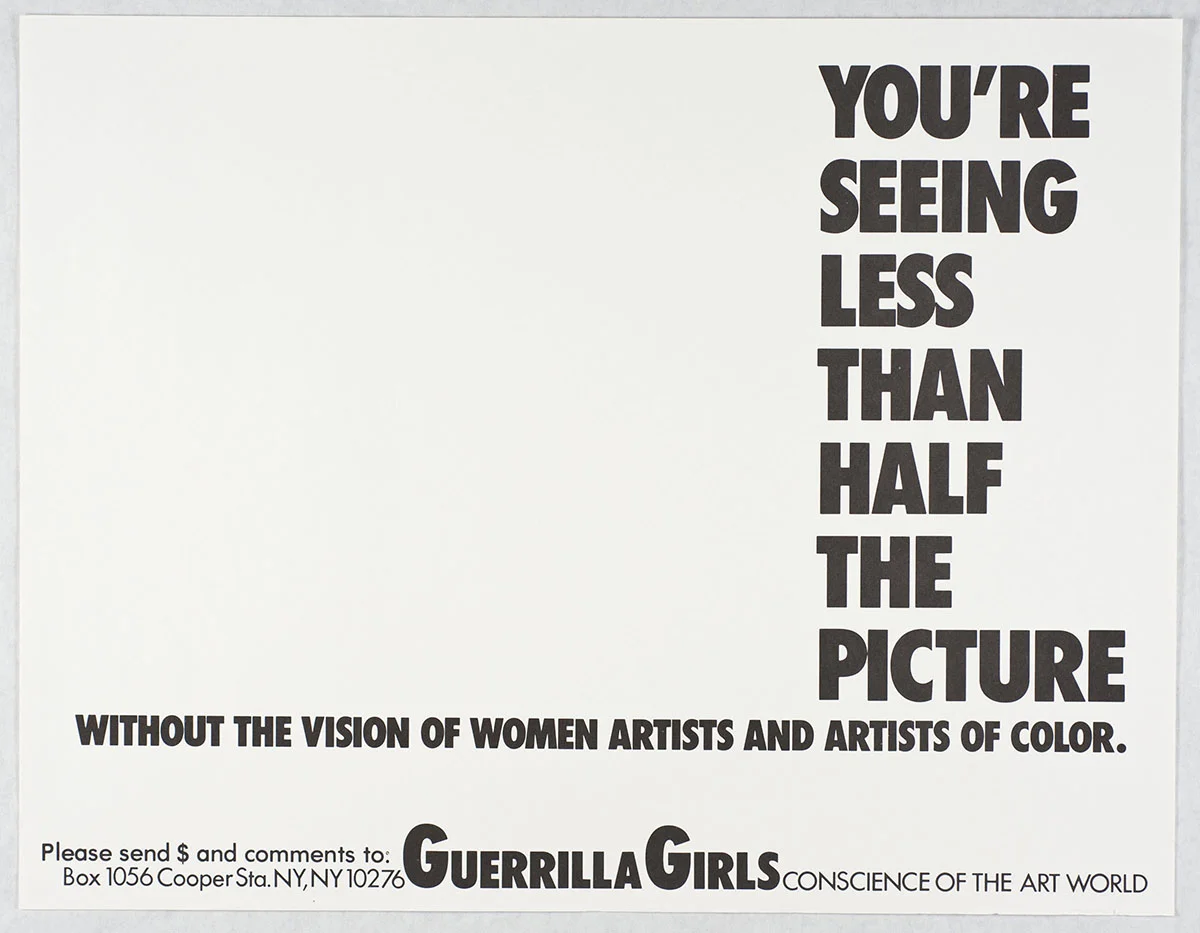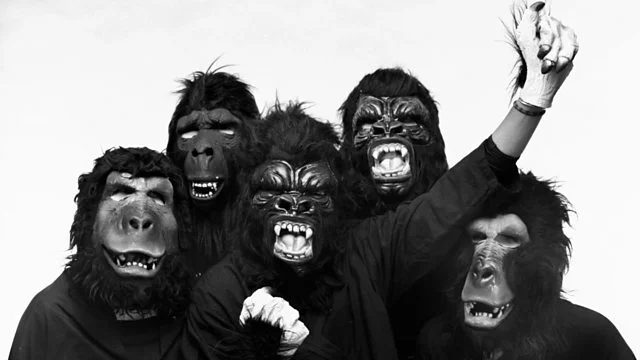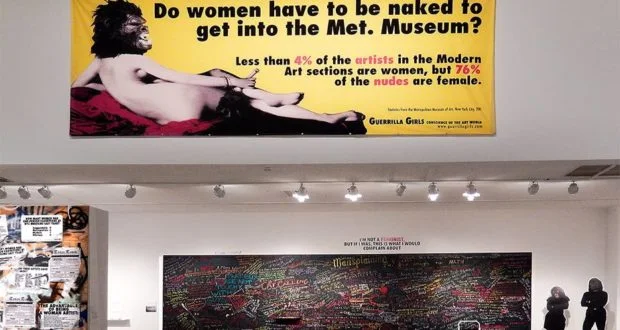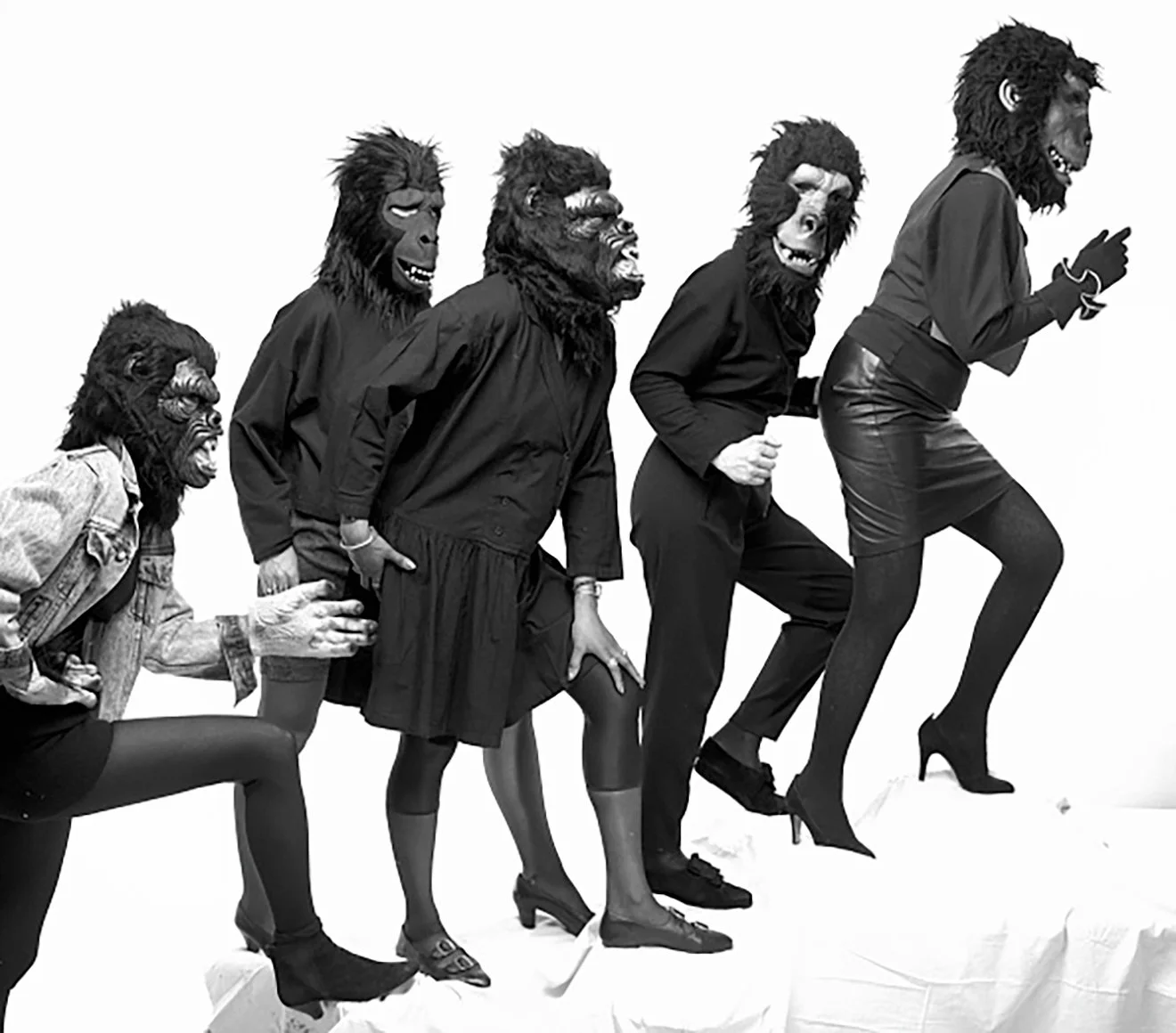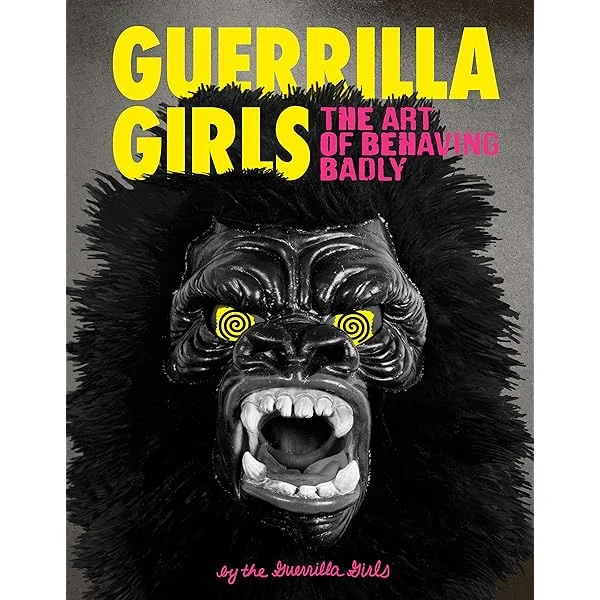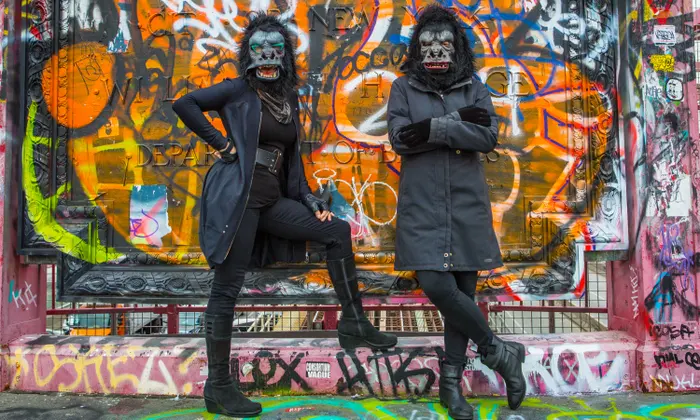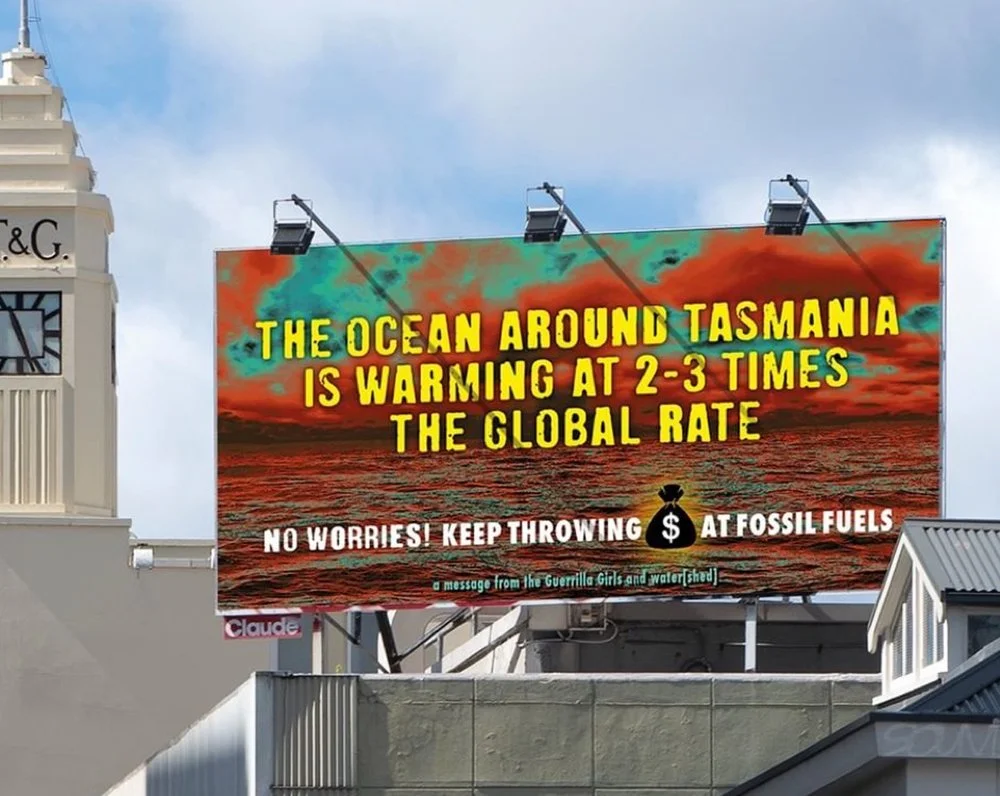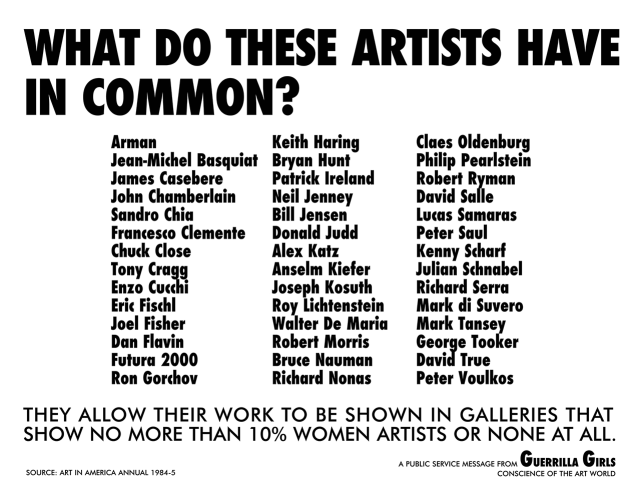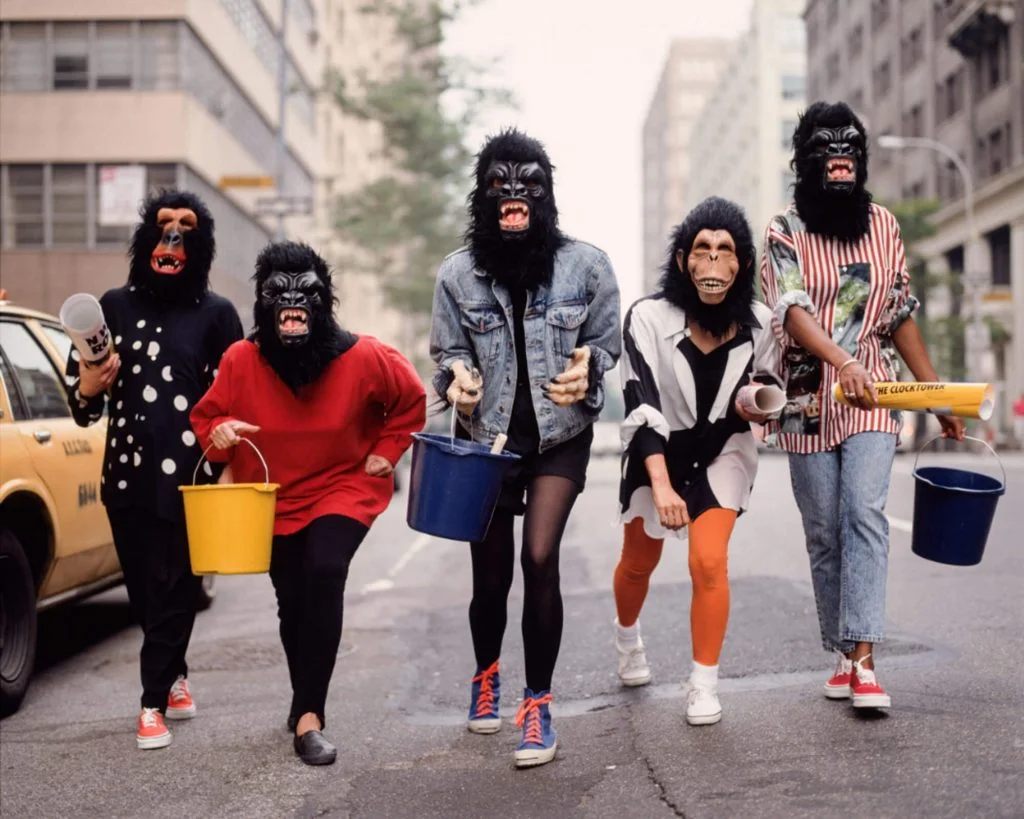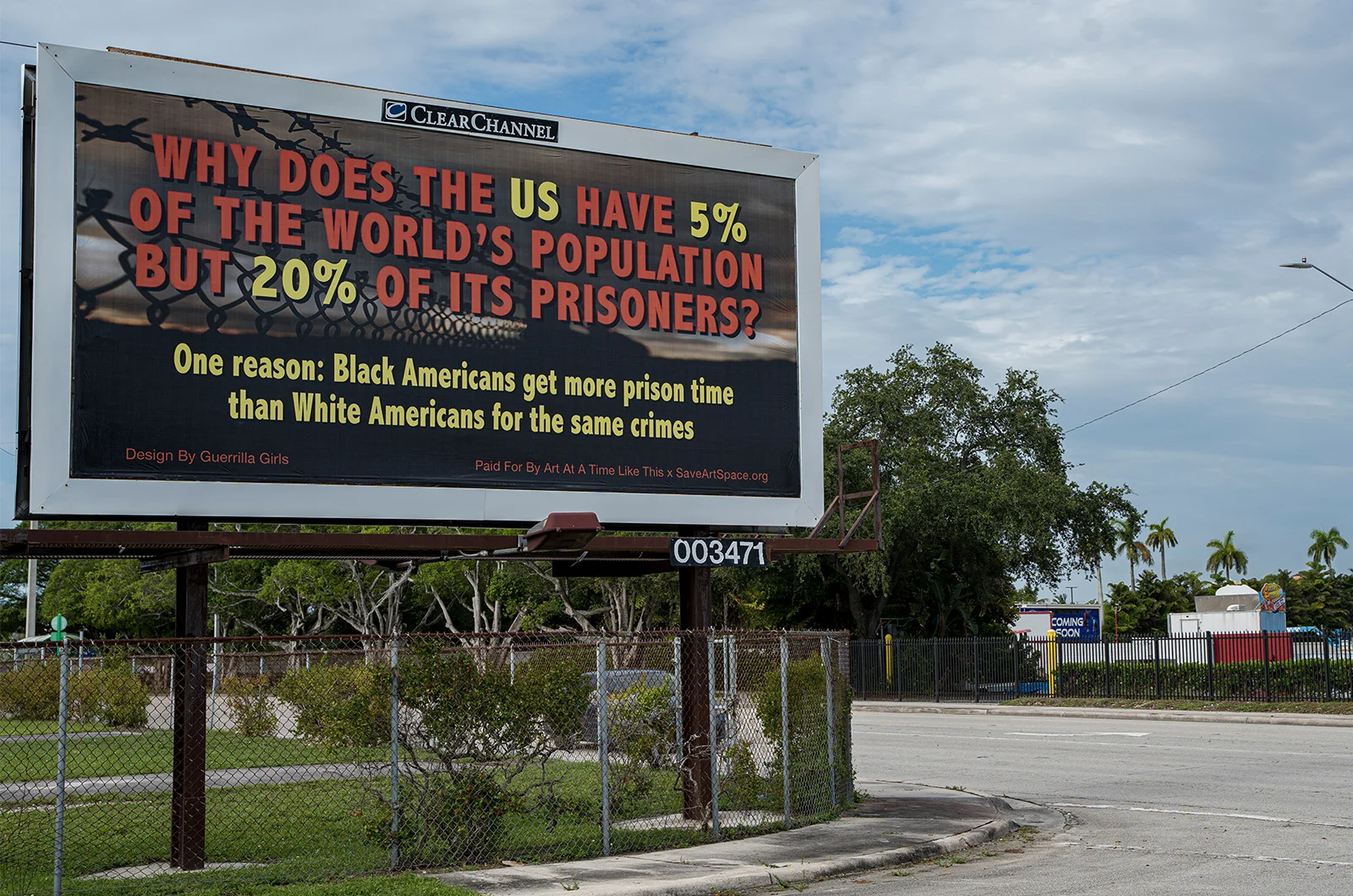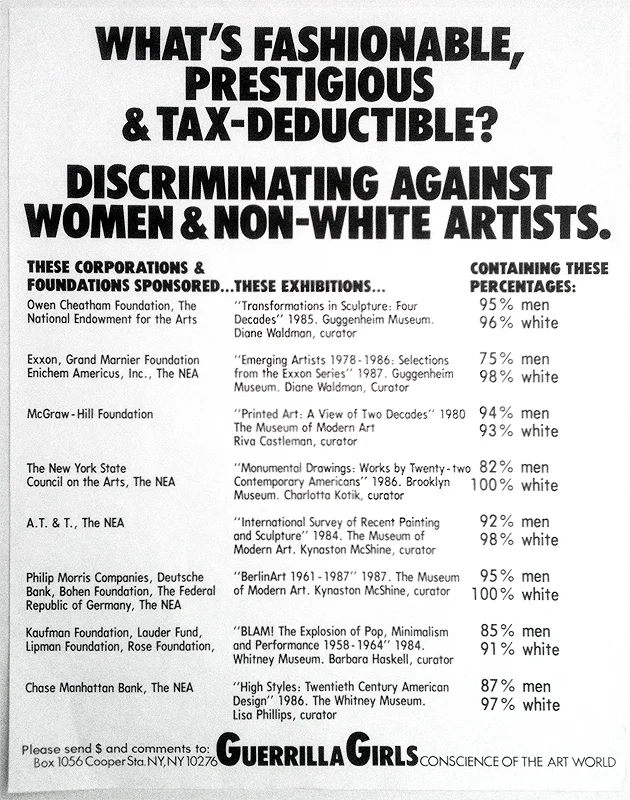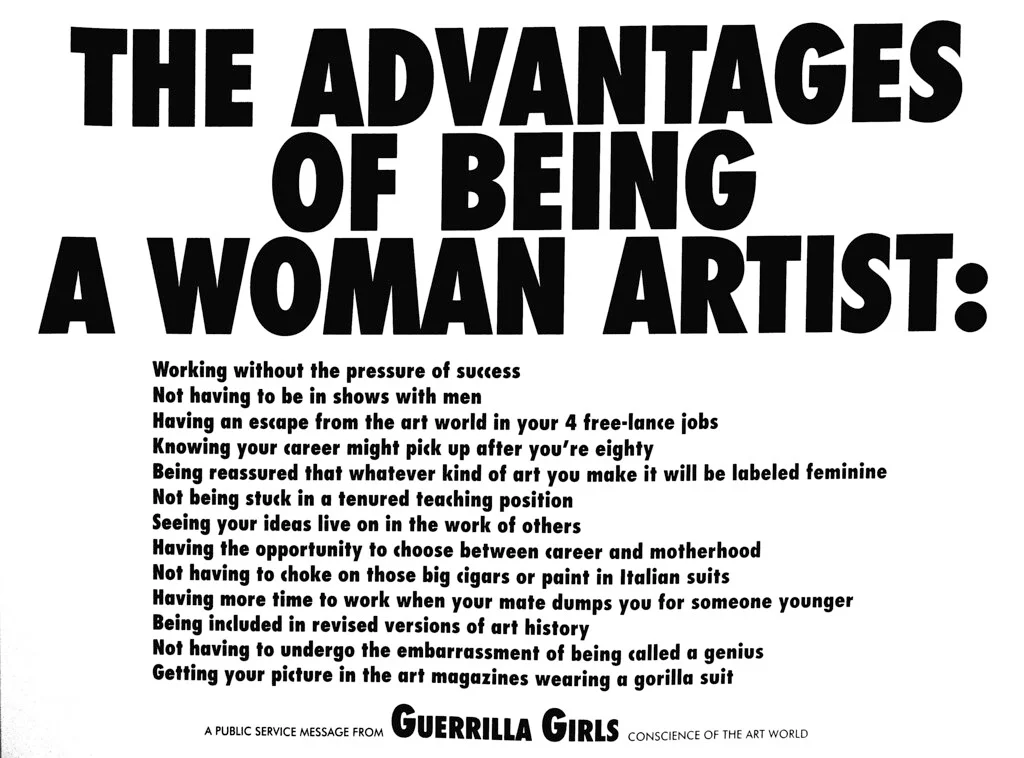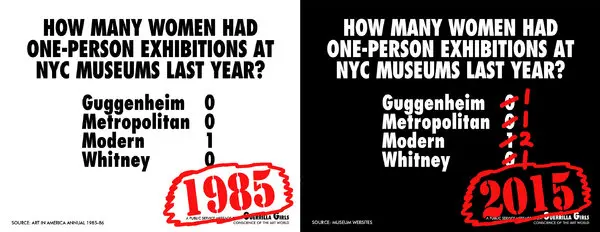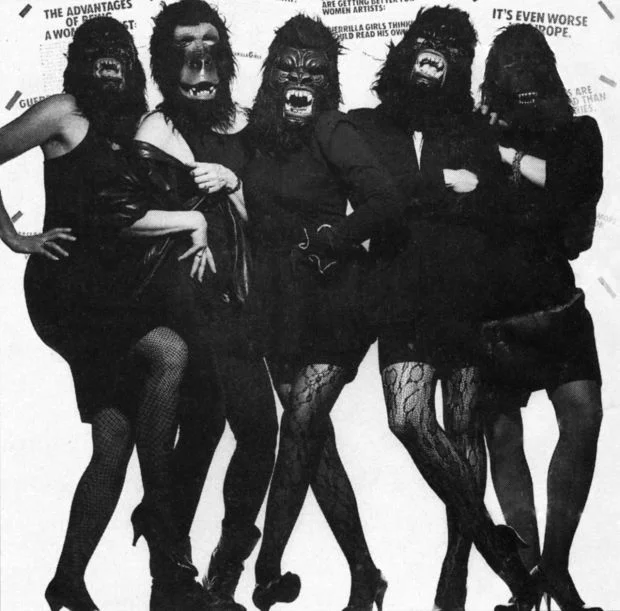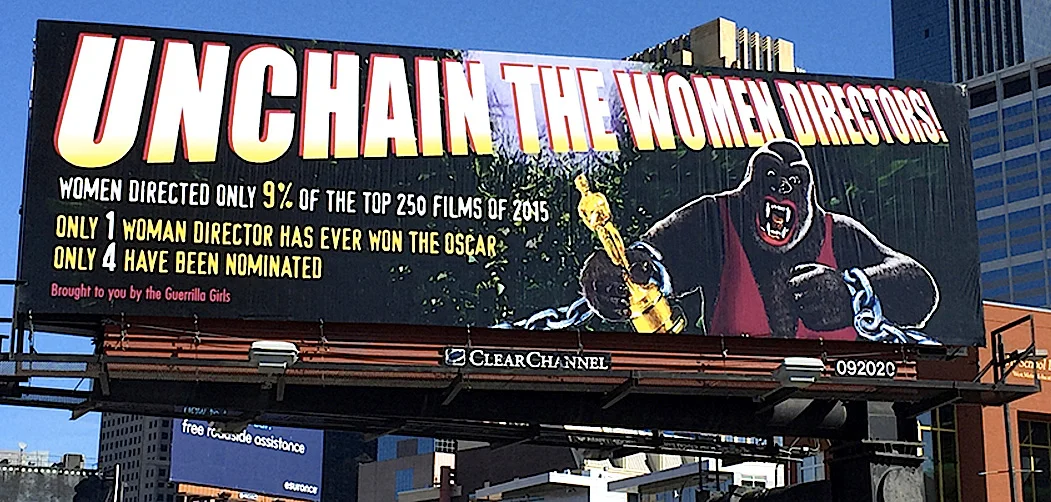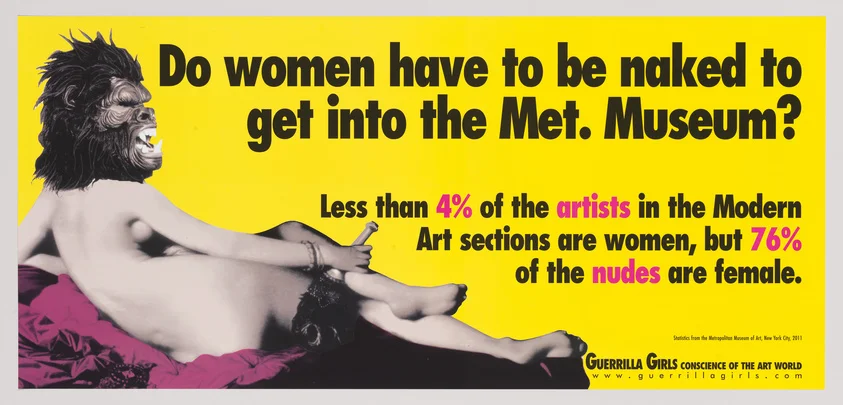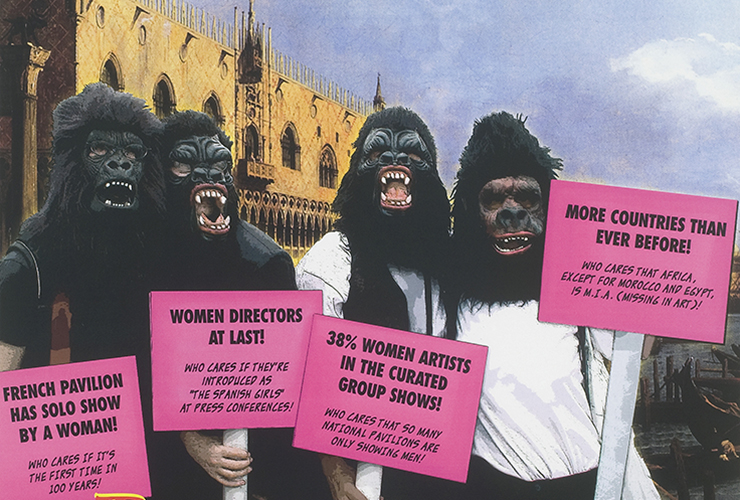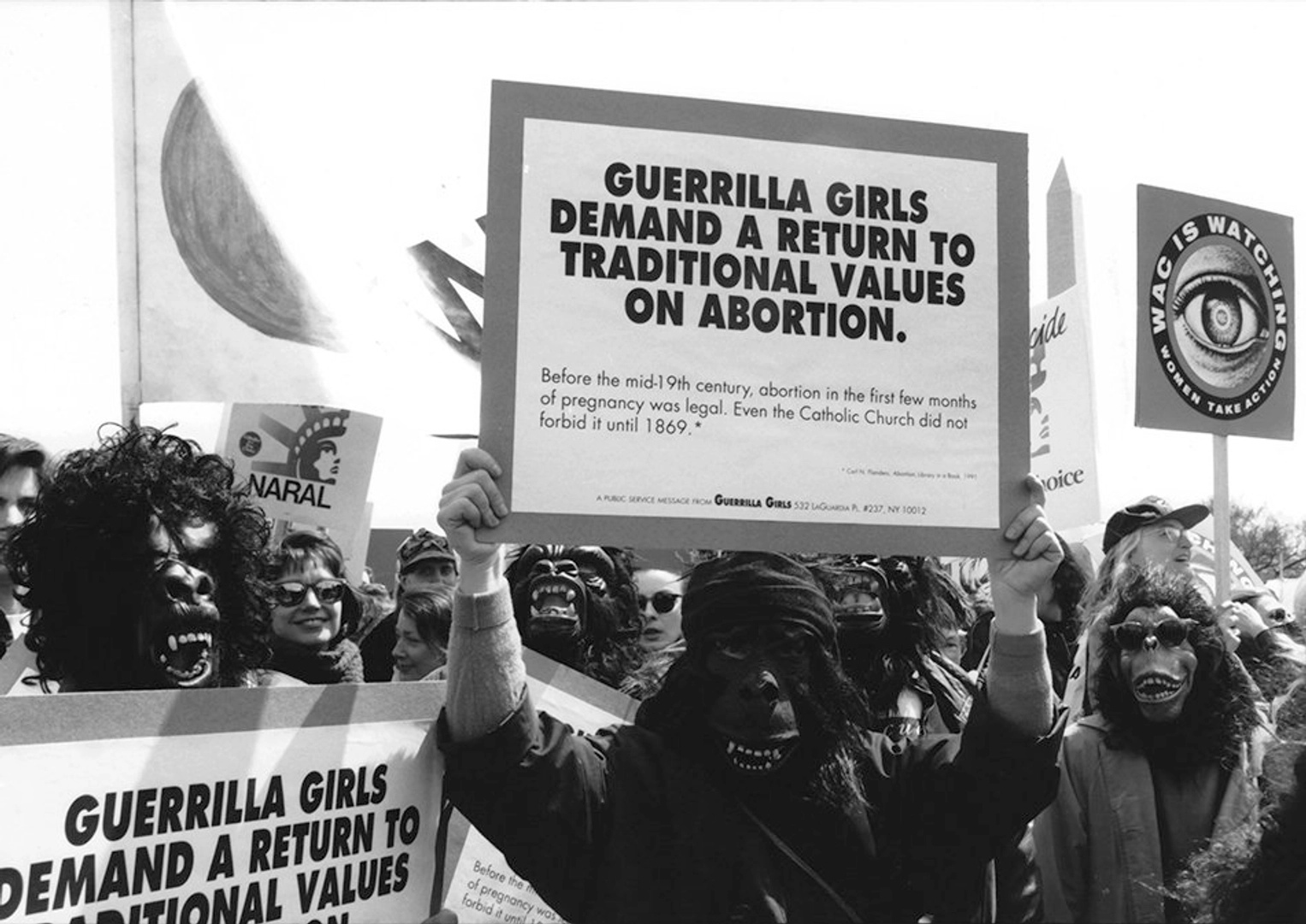Guerrilla Girls
A feminist collective of artists using graffiti and performance to denounce sexism in the art world.
(1985-Present)
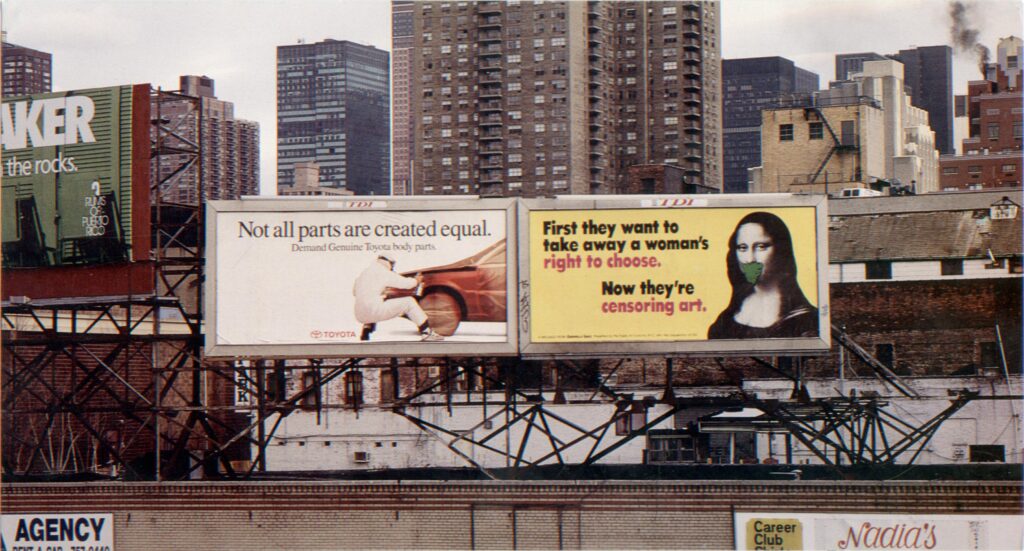
Unleashing Feminist Art Activism onto the World Stage
In the annals of art history, few movements have been as bold, brash, and unapologetically feminist as that of the Guerrilla Girls. Founded in 1985, this New York-based collective of anonymous feminist artists has spent over three decades using art to challenge societal norms, shed light on gender inequality, and advocate for women's rights.
The Guerrilla Girls took their name from the clandestine tactics they employed in creating their works – a nod to the urban guerrilla movements of the late 20th century that used unconventional means to effect political change. But while these other groups focused on armed struggle and violence, the Guerrilla Girls chose a more creative path: art.
The collective's most iconic works are their posters and billboards, which feature provocative images and statistics designed to shock and challenge viewers. One of their most famous pieces, "Do Women Have To Be Naked To Get into the Met. Museum?" (1989), showcases a naked woman with breasts replaced by barcodes, standing next to a man in a suit, who is holding a ruler – a clever nod to the fact that, at the time, only 4% of the Met's permanent collection consisted of works by women.

The Guerrilla Girls' art activism was not just limited to physical installations; they also used print media and social networks to spread their message far and wide. In the late 1980s, they began producing a poster series called "The Guerrilla Girl Poster Project," which featured a different feminist artist each month. These posters were distributed widely, both physically and digitally, allowing the collective to reach a global audience.
One of the most intriguing aspects of the Guerrilla Girls is their decision to remain anonymous. One member explained that the anonymity allowed them to focus on the ideas behind their art rather than their individual identities – a strategy reminiscent of other feminist artists like the Guerrilla Girls' contemporaries, the Graffiti Artists' Association.
However, this anonymity also led to some controversy and speculation over the years. Some have accused the collective of being a front for a well-known artist or group, while others have lauded their decision as a way to subvert the male-dominated art world's focus on individual identity and fame.
Despite these debates, the Guerrilla Girls' impact on the art world is undeniable. Their works have been exhibited in museums around the world, including the Museum of Modern Art, the Tate Modern, and the Victoria and Albert Museum. They have also been the subject of numerous academic studies and articles, with scholars exploring their role in feminist art activism and their influence on contemporary artists.
One such study, "The Guerrilla Girls' Iconic Posters: The Power of Art to Challenge Social Inequality" (2019), by art historian Dr. Sarah McCullough, argues that the Guerrilla Girls' use of statistics in their posters is an effective way to raise awareness about gender inequality and challenge viewers to reconsider their biases (McCullough, 2019). Another study, "Beyond the Poster: The Guerrilla Girls' Multimedia Activism" (2020), by media scholar Dr. Lisa Harunani, explores the collective's use of various media platforms to disseminate their message and engage with audiences beyond the gallery space (Harunani, 2020).

The Guerrilla Girls' legacy extends beyond the art world as well. Their activism has inspired a new generation of feminist artists, writers, and thinkers who continue to challenge societal norms and advocate for women's rights. For instance, the work of contemporary artist Wangechi Mutu is influenced by the Guerrilla Girls' use of collage and their feminist perspective (Mutu, 2013).
In conclusion, the Guerrilla Girls' art activism has left an indelible mark on the world stage. Through their provocative posters, billboards, and other works, they have challenged societal norms, shed light on gender inequality, and advocated for women's rights. Their decision to remain anonymous allowed them to focus on the ideas behind their art and subvert the male-dominated art world's focus on individual identity. As we continue to grapple with issues of gender equality and social justice, the Guerrilla Girls serve as a reminder that art can be a powerful tool for change.
Links:
Official Website of The Guerrilla Girls
Articles:
Interview - The Guerrilla Girls: 'We upend the art world's notion of what's good and what's right'
Feminist Street Posters - Written by Marc H. Miller and Jonah Wolf
References:
Harunani, L. (2020). Beyond the Poster: The Guerrilla Girls' Multimedia Activism. In R. J. Brinkerhoff & S. D. Weinreb (Eds.), Feminist Media Studies (pp. 156-171). Taylor & Francis.
McCullough, S. (2019). The Guerrilla Girls' Iconic Posters: The Power of Art to Challenge Social Inequality. Journal of Visual Culture, 18(3), 267-285.
Mutu, W. (2013). Wangechi Mutu in conversation with Kara Walker. In TateShots, (pp. N/A-N/A). [Tate]. Retrieved from
https://www.tate.org.uk/context-comment/artist/wangechi-mutu/page1. The Guerrilla Girls. (n.d.). About Us. Retrieved from https://guerrillagirls.com/about/.
